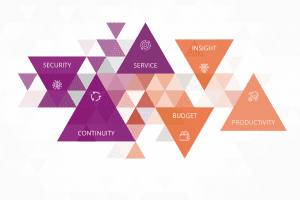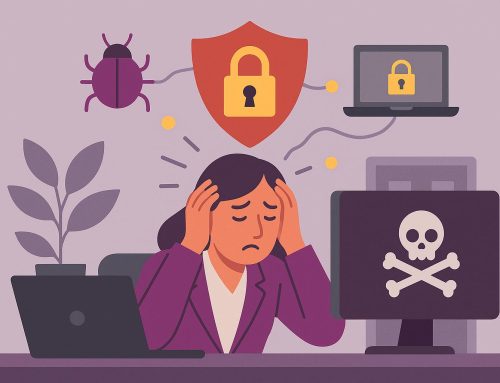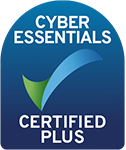Using the right tech in the right way can really help your business save money – you may be surprised at just how much! Here’s how …
By Bruce Penson
With the grey clouds of economic uncertainty hanging over us, and the threat of a potentially deep recession on the horizon, many businesses are looking into how they can reduce operating expenses.
Some firms might still consider their technology spend to be an expense. However, in doing so, they are potentially ignoring a significant source of cost savings, better ways to make their business more competitive and the opportunity to improve their service.
4 key areas where using the right tech can help save money
Technology can enable cost savings in key areas like travel, supplies, energy – and most significantly for service firms – allow you to do more without increasing your headcount.
 So, let’s have a look at some technology strategies you can adopt to weather the storm and turn a potentially rocky couple of years into an opportunity for your firm.
So, let’s have a look at some technology strategies you can adopt to weather the storm and turn a potentially rocky couple of years into an opportunity for your firm.
Reduce time spent in meetings
Many firms already do a proportion of their meetings online, which saves travel time – and significantly so if these are overseas meetings. However, this is often not happening as part of a deliberate strategy and I would argue that for many service businesses, moving all your meetings to online would be detrimental to your firm. Consider planning all your meeting cycles and working out a sensible cadence for online meetings, including scheduling virtual meets where the most savings on travel time would be made. Tools such as Calendly are great for doing this.
You can also ensure your meetings run to a tighter schedule by using collaboration tools to share notes, actions and the agenda with all attendees. If you have the Microsoft 365 suite, then you are blessed with numerous options for doing this – SharePoint and OneNote are our favoured options at Pro Drive. These have the advantage of integrating well into Microsoft Teams for online meetings.
Finally, instead of communicating updates on your products or services to your clients in your meetings with them, consider doing this by running a webinar or recording a video and sending to them via an electronic newsletter. Not only will you be able to reach more people with this information, you will only need to run through it once rather than repeating for every one of your clients – saving you time. I’m not suggesting you replace face-to-face meetings with clients as these are vital to maintaining good relationships but you can potentially cut down the number by supplementing these visits with online communications.
Automate business processes
Do you have anyone in your business entering data into business systems that arrives by paper or email? Or even worse, entering the same piece of information into more than one business system? These are all processes which could be automated – and in fact in most cases should be as it will almost always be lower cost to automate than to pay people to do the work. And your staff will thank you as well – very few people enjoy data entry!
The best way to identify repetitive and time-consuming business processes is to survey your staff (an anonymous survey is a good approach – use a tool like SurveyMonkey). You can then form some working groups to document the processes and work with your IT team or advisors to help find a way to automate it.
A good starting point is usually your finance function. If you still have staff entering expenses and purchase invoices into your accounting system, then it is worth investigating software like Dext (formally Receipt Bank) which does this for you.
Become a paperless business
Whilst you are in the process of automating your business, you should cut down on paper being sent to, or created by, your firm. If you insist that all your communication is electronic, your scope for automation will increase.
Another big benefit of eliminating paper from your business (apart from the obvious environmental one) is that you are allowing work relating to it to be conducted from anywhere. This enables you to move administration work to areas of the country with lower salary demands – or even overseas.
Make your phone calls in the cloud
 If you are still using a traditional office phone system or mobile phones to make your business phone calls, there are far more cost-effective approaches.
If you are still using a traditional office phone system or mobile phones to make your business phone calls, there are far more cost-effective approaches.
Firstly, if you have Microsoft 365 then you should immediately switch all internal calls to Teams. There is no cost for Teams calls as these all go via the internet, and you can use the smartphone app to reach people on their mobiles as well. Whilst this approach does depend on having an internet connection, there are very few places without one now.
For your outbound calls, especially if you make some overseas, a cloud-based voiceover IP (VoIP) phone system can make significantly lower cost calls than any traditional office or mobile phone plan. VoIP phones can run off apps on your PC or mobile phone or even as an add-on to Microsoft Teams – so they require little cost to deploy.
Be smarter with your computer purchases
PC – and in particular laptop replacements – can form a reasonable portion of capital expenditure for services firms. However, rarely is a strategy developed for purchasing and replacement of such devices – typically this is carried out on an ‘as needs’ basis.
To reduce costs you should:
- Identify the requirements of your staff.
- Select a device/s with the capability to last the required length of time.
- Ensure warranty and accidental damage cover is secured for the expected lifetime of the device.
By having a strategy and process in place, you will also be preventing the productivity of your staff being affected by slow computer performance and waiting for repairs.
Increasing the specification and warranty of your computers will, of course, increase initial capital outlay – and the effect on cashflow in the current economic climate may not be desirable. So, consider leasing instead of purchasing. As well as spreading the cashflow impact, there can be tax advantages in doing so.
Switch off energy-hungry devices
Some technology equipment can be heavy consumers of electricity. Whilst most modern kit has an ‘energy-saving mode’, often the scope of what they can save is limited. And some offices will have older equipment without energy-saving capability that is still serviceable.
![]() Smart plugs and switches can be set to timers to ensure equipment is only powered on when the office requires it. Large printers, scanners and photocopiers are particular culprits but you should consider using smart technology to control lighting and other electrical devices as well.
Smart plugs and switches can be set to timers to ensure equipment is only powered on when the office requires it. Large printers, scanners and photocopiers are particular culprits but you should consider using smart technology to control lighting and other electrical devices as well.
If you have desktop PCs, ensure these are switched off at the end of the day as well. This can be automated if you find your office staff are not reliable at doing it.
Why getting rid of your servers will save money
Servers are the most energy-hungry of all business IT equipment. Whilst there is the obvious cost of buying and replacing them (which has increased significantly in recent years), most firms don’t consider the cost of powering the server and cooling a server room.
“A single server can consume nearly as much electricity as a modern hairdryer – but it is on 24/7/365. This could easily be in excess of £2.5K per server at current electricity rates.”
Moving servers to the cloud is not cost free but it can save significant amounts. If you are still running email servers in your offices this is one of the quickest wins. But you should conduct a review of your server estate to see what savings you could achieve.
How to get started
If you want to put your technology to work to help make your business more efficient and competitive, you should develop a plan. Without a technology plan, you could fail to realise the benefit it can bring to your firm both in the short – and longer terms – and you will fall behind your competitors who are doing this.

If you would like help getting started, talk to us about an audit of your IT maturity and creating your strategic IT plan.
You can contact us on the form below or by phoning 0330 124 3599.







